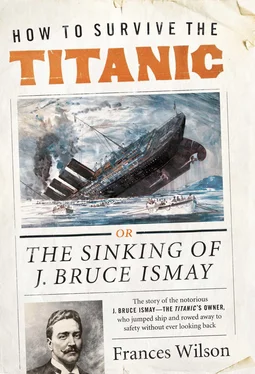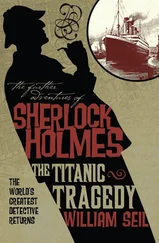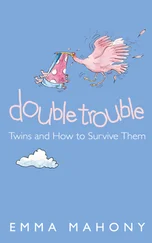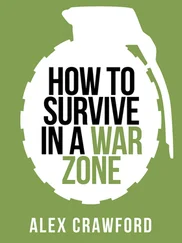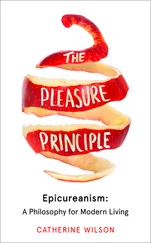‘You did not speak to him that night?’
‘I did.’
‘You told me you looked at one another and said nothing.’
‘I might have spoken and I might have said “Good evening”.’
‘I mean after the collision.’
‘After the collision, no.’
‘One moment,’ Smith paused. ‘After the collision you saw Mr Ismay standing on the deck?’
‘Yes.’
‘Looking out at sea?’
‘I don’t know what he was looking at.’
‘You were standing out at deck about twenty feet from him?’
‘No, sir.’
‘You say now that you did not say that?’
‘No, sir.’
‘Would that not be true?’
‘I do not think so. I was walking along that side of the deck.’
‘How far past Mr Ismay?’
‘I walked past him within a couple of feet of him.’
‘And he said nothing to you and you said nothing to him?’
‘I might have said “Good evening”. Beyond that I said nothing. I had work on; something else to do.’
‘Did he say anything else to you?’
‘Not that I know of. He may have said “Good evening”. Perhaps I said that, perhaps I did not. I do not remember.’
‘In a great peril like that, passing the managing director of the company that owned the ship, you passed him on the ship and you said “Good evening”?’
‘I would, as I would to any passenger I knew.’
‘And he passed you and said “Good evening”?’
‘I could not say. I say I may have said “Good evening” and may not, and he may have said it and he may not.’
‘I only want to know as well as you can recollect.’
‘I cannot say for certain.’
‘My recollection is that you said you did not speak to him.’
‘I am not certain. If I did speak, it was purely to say “Good evening” and nothing more and nothing less.’
‘How long was that after the collision?’
‘I think,’ said Lightoller, ‘you will find that in the testimony.’
‘I know I will find it there,’ said Smith, ‘but I want it again. Your recollection is just a little better today than it was the other day, and I would like to test it out a little.’
‘On the contrary,’ said Lightoller. ‘My mind was fresher on it then, perhaps, than it is now.’
According to Lightoller’s granddaughter, Louise Patten, the officer confided to his wife a very different version of events. What he told her was kept a ‘family secret’ for nearly a century. Following the collision, when he had gone to the bridge to ask if the blow was serious, Ismay had told the Captain to continue moving ‘Slow Ahead’. [4] The Titanic contained an internal telegraph signalling system by which commands from the bridge could be shown on the engine room telegraph indicator. The positions on the clock-shaped indicator went from Stop, to Slow Ahead, Ahead One Quarter, Half Ahead, Ahead Three Quarters and Full Ahead.
The ship, which had stopped following the collision, now started up again and continued at a speed of around 5 or 6 knots until 12.15 a.m., when the Captain sent down the order to once more stop the engines. In pushing her forward, Lightoller believed, Captain Smith had allowed water to pour through the damaged hull at hundreds of tons a minute and to burst through six watertight compartments, one after another. Had the Titanic stood still, ‘the whole ship would have assumed a fairly acute and mighty uncomfortable angle, yet, even so, she would, in all probability have floated — at least for some considerable time, perhaps all day. Certainly sufficient time for everyone to be rescued.’ 15
We cannot know whether or not Ismay gave the Captain this order, but had he done so it would not have been an unreasonable suggestion, and nor would it have been out of character. He was confident that the Titanic was unsinkable and he wanted to avoid the adverse publicity of a damaged liner being needlessly towed to port. In his testimony, Lightoller described Ismay as silent and motionless on the Titanic and as incapable of action on the Carpathia. Ismay, too, presented himself as a man who said nothing, saw nothing and did nothing. But the reason for Ismay’s conflicts with his father, Wilton Oldham believed, was that Bruce was ‘quick thinking’, that he acted independently and made decisions without due consideration. In a crisis, when given a choice between action and inaction, Ismay was the sort of man who would always opt for action, but on a sinking ship standing still is a mark of heroism. As Kipling put it: ‘But to stand an’ be still to the Birken’ead drill is a damn tough bullet to chew… So they stood an’ was still to the Birken’ead drill, soldier an’ sailor too.’
‘An Ismay’, as journalists had noted of the family tendency, ‘never goes back’. For Bruce Ismay, keeping going was better than standing still; [5] Lawrence Beesley agreed. He describes how the Titanic, having initially stopped dead still, then ‘resumed her course, moving very slowly through the water… I think we were all glad to see this: it seemed better than standing still.’ (Beesley, The Loss of the SS Titanic, p. 30.)
advancing straight at the iceberg was better than trying to swerve around it; jumping into a lifeboat was better than remaining on the ship; pushing the wrong way on an oar was better than not rowing; returning to England was better than waiting around in New York; looking forward at the horizon was better than looking back at the sinking ship. Ismay, who never again rode a horse and rarely wore an overcoat after his father’s humiliations, can always be found shutting the cupboard door which contains the sea before continuing down the corridor. Jack Thayer described him in the doctor’s cabin on the Carpathia as ‘looking ahead with his fixed stare’, and when he was deciding whether or not to become president of the IMM, Ismay had told Sanderson: ‘I intend going slow, and giving the matter the most earnest and careful consideration.’ Was Ismay’s flaw that he acted too quickly, or too slowly?
It is easy to hear him give the order to Captain Smith to go ‘Slow Ahead’. Ismay’s refusal to believe that either the Olympic or the Titanic could sink as a result of a collision is apparent in a letter he sent on 7 March to the head of the Hamburg-America Packet Company. ‘The fact there is no graving dock in America which would accommodate the Olympic and the Titanic has given me much food for thought as to what would happen in the event of one of these vessels meeting with a serious accident in American waters.’ 16It is also easy to hear the Captain — who lost control of the situation almost immediately — agreeing that to continue slowly was the right thing to do. ‘I cannot imagine’, Captain Smith had said of the Titanic, ‘any condition that would cause a ship to founder. Modern shipbuilding has gone beyond that.’ Why panic the passengers, most of whom were asleep, by stopping the ship? Because she had been running under a full head of steam, all eight exhausts would, Lightoller later said, start ‘kicking up a row that would have dwarfed the row of a thousand railway engines thundering through a culvert’. 17A few months earlier, had the Olympic not stayed afloat when he rammed her into the HMS Hawke? And here was the Titanic, also built like a battleship, but a thousand tons heavier.
Later, according to Lightoller’s granddaughter, ‘while they were still on the Carpathia, the chairman of the White Star Line had shown my grandfather where his duty lay. Due to certain exceptions in White Star Line’s limited liability insurance policy, Bruce Ismay had told him, if the company were found to be negligent it would be bankrupted and every job would be lost. Rightly or wrongly, my grandfather decided that it was his first duty to protect his employer and his fellow employees, and in his autobiography he made it clear that this was exactly what he had done.’ 18
Читать дальше
